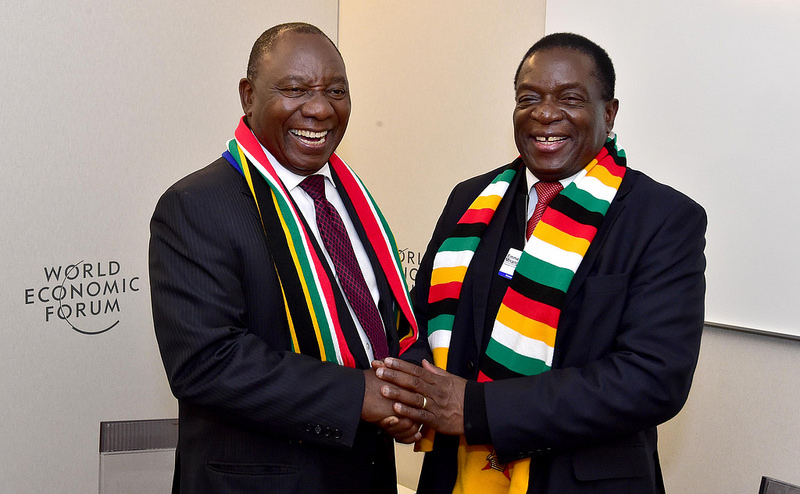Introduction
Many in developed countries believe that workers in their jurisdictions have been negatively impacted by trade, primarily as a result of labour cost differences between developed and developing jurisdictions. At the WTO, many developed countries, most prominently, the United States, have sought to predicate further trade liberalization on the adoption of trade and labour standards. In bilateral and plurilateral trade agreements, developed countries have increasingly emphasized including provisions aimed at reducing labour cost differences between the parties.
The Multilateral System and Labour Standards
To date, developed countries have been unsuccessful in bringing trade and labour standards within the WTO’s framework for regulating multilateral trade. For example, in 1987 and 1990, the US suggested forming a working group to consider the relationship between international trade and internationally recognized workers’ rights. However, the US was unsuccessful each time. In addition, some developed WTO members have advocated for inserting a social clause within the WTO Agreement, and for recognizing core labour standards according to the International Labour Organization (ILO) within the WTO Agreement’s preamble. The effect would be to incorporate labour within the WTO framework, thus subjecting labour issues to scrutiny through the usual WTO dispute settlement provisions.
However, the WTO and the vast majority of its member states have consistently rejected incorporating rules regarding labour standards within the WTO’s framework. At the 1996 Ministerial Conference in Singapore, the majority of members agreed that the WTO does not and should not have jurisdiction over labour issues. In its official declaration, the WTO affirmed the ILO as the “competent body to set and deal with [labour standards],” and declared that further trade liberalization should not depend on adopting labour standards for international trade. In particular, the WTO emphasized that labour standards should not be used for protectionist purposes, and that “the comparative advantage of low wage countries should not be compromised.”
At the 1999 and 2001 Ministerial Conferences in Seattle and Doha, the WTO reaffirmed its declaration to refuse jurisdiction over labour. However, the issue remains contentious among many WTO member states. Although, trade and labour standards have never appeared on the WTO’s agenda since 2001, developed countries have sought to address ‘unfair trade’ concerns stemming from labour cost differences outside of the multilateral system.
The Bilateral and Plurilateral Approach to Labour Standards
While developed countries have been unsuccessful in making trade and labour standards subject to WTO regulations, they have been far more successful in addressing labour cost concerns through bilateral and plurilateral trade agreements. Since the 1990s, not only has there been a major proliferation in the number of preferential trade agreements (PTAs), but an increasingly significant number of them (30+%) contain explicit provisions committing the parties to certain labour standards.
Consider, for example, the US’ recently devised framework for negotiating PTAs. In 2007, the Bush Administration and Congress negotiated the 2007 Bipartisan Agreement, which sets a framework for the treatment of labour in US trade agreements. First, the Bipartisan Agreement establishes that labour standards must be incorporated into every trade agreement negotiated with the US. Second, the Agreement provides that trade agreements must commit the parties to adopting in their national legislation, the following five labour principles outlined in the ILO’s Declaration on Fundamental Principles and Rights at Work:
- Freedom of association;
- Effective recognition of the right to collective bargaining;
- Elimination of all forms of forced or compulsory labour;
- Effective abolition of child labour and prohibition of the worst forms of child labour; and
- Elimination of discrimination in respect of employment and occupation.
Under the Bipartisan Agreement’s model provisions, any violations of labour obligations that affect trade and investment between the parties must be addressed by government-to-government dispute settlement procedures. This applies the same remedies, like fines and trade sanctions, and procedures used to address commercial obligations, to disputes regarding labour. Subsequently negotiated PTAs between the US and its trade partners have reflected these labour-related obligations. This demonstrates a heightened degree of concern for workers in the United States, and a bipartisan policy goal of reducing labour costs differences with trade partners.
Select Provisions Regarding Labour in the US-Mexico-Canada Agreement
The recently negotiated US-Mexico-Canada Agreement (USMCA) illustrates the significance of resolving labour cost differences in US trade policy. In comparison to its predecessor, the North America Free Trade Agreement (NAFTA), the USMCA places a heavier emphasis on unifying labour standards and costs. This is accomplished in three significant ways: (1) by giving governments more flexibility to strengthen national labour standards through legislation; (2) by incorporating labour provisions in its main agreement; and (3) by raising automotive manufacturing content requirements.
First, the USMCA eliminates NAFTA’s Chapter 11 Investor-State Dispute Settlement (ISDS) provisions. The ISDS process had given foreign investors and corporations standing to sue governments party to NAFTA if they believed their operations were harmed by the government’s regulations. However, removing the ISDS provisions gives governments more flexibility to introduce laws regarding labour. This could include legislation that raises labour standards, without fearing legal action from foreign investors and corporations.
Second, the USMCA addresses labour provisions in Chapter 23 of its main agreement, whereas NAFTA only included labour standards in a side agreement. The USMCA commits the parties to uphold the five ILO principles mentioned above, as well as measures to prohibit the importation of goods produced by forced labour, to address violence against workers, and to ensure migrant workers are protected under labour laws. In addition, including labour as a stand-alone Chapter in the USMCA makes labour provisions enforceable through the state-to-state dispute settlement process outlined in Chapter 31. Moreover, the USMCA’s Annex on Worker Representation in Collective Bargaining in Mexico commits Mexico to specific legislative actions to recognize workers’ collective bargaining rights. If such legislation passes, Mexican labour standards will likely rise. This will likely include improvements to wages and working conditions, effectively raising labour costs for firms operating in Mexico.
Third, the USMCA raises automotive content requirements. Under the USMCA, North American content requirements for vehicles produced on the continent will be raised from 62.5% under NAFTA, to 75% (by 2023). In addition, the USMCA stipulates that 40% of automobile and 45% of truck material and manufacturing costs must originate in facilities where direct production workers have an average wage of at least US $16 per hour. The effect of the latter provision will be to protect workers in the manufacturing sector in high labour cost jurisdictions from job displacement. This would be at the expense of workers in low-cost jurisdictions, producers seeking to take advantage of GVCs, and consumers who will be faced with increased automotive costs.
Conclusion
The USMCA is one of an increasing number of PTAs which commit parties to certain labour standards. This is in addition to general systems of preferences that international trading leaders like the US and the European Union already provide to developing countries on certain conditions, including labour requirements.
The proliferation of PTAs should certainly concern proponents of trade liberalization according to the WTO’s multilateral rules. It appears the bilateral and plurilateral routes have become the default option for states seeking to achieve their trading objectives. Given the economic power imbalance between most developed countries and developing ones, it is very likely that developed countries will continue to see PTAs as a more efficient means of achieving trade-related objectives than policy proposals before the WTO.
Photo: “President Trump Participates in the USMCA Signing Ceremony” by Ron Przysucha via Flickr.
Disclaimer: Any views or opinions expressed in articles are solely those of the authors
and do not necessarily represent the views of the NATO Association of Canada.




